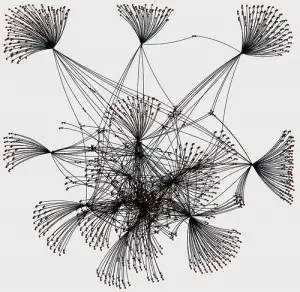How Can Nonprofits Use Twitter? Should They Even Bother?
This blog post is a contribution to the Net2ThinkTank from the netsquared community. It is great community of people discussing about non-profits and technology. I can highly recommend their podcasts. When I got from Britt Bravo an email to join the discussion about above topic I was more than happy to join.
How Can Nonprofits Use Twitter? Should They Even Bother?
NO, because twitter has too many voices and not enough responses. It is too exhausting trying to follow a conversation. The quality of exchange is simply to random. Most important, twitter is a lot about web2.0 but not so about non-profits, activism, social change, politics or the digital divide. There is not enough attention and the speed washes every message away within minutes. The message space is too limited. What could be explained in 140 characters? Is that seriously enough for a campaign or advocacy?
 Still curious? Check out whether your target audience is twittering or whether twitter users are potentially interesting for your work. Search with key words in terraminds.com and find out who talks about your topics on twitter. Twitter users and their networks might be influential, although topics on civil society are not so common. Non-profits should not only send but also allow for reception on twitter.
Still curious? Check out whether your target audience is twittering or whether twitter users are potentially interesting for your work. Search with key words in terraminds.com and find out who talks about your topics on twitter. Twitter users and their networks might be influential, although topics on civil society are not so common. Non-profits should not only send but also allow for reception on twitter.
YES, because with twitter a real network effect comes in. Networks overlap and people engage. It is not only about joining a cause but also interacting: ask questions, engage and link. There are three ways in which twitter can be interestingly used for non-profits (more to follow later):
1) Mobilization Twitter allows quick mobilization either internally and externally. Activists can be alerted or informed about latest developments. Twitter users are often hubs themselves and can quickly spread a message. One obvious area is for human rights. Imagine if different NGOs could form networks in twitter for information exchange, broadcast and mobilize via mobile phone.
2) Internal communications Most non-profits are still centralized and their network is far spread. Twitter can be used to have an ongoing conversation with members in a decentralized structure. It can give more life to an organization and bring the center more to the periphery. It can help to bring in expertise from members or sympathizers. An organization asks questions, test out ideas or brainstorm about next steps with its constituency.
3) Extra organizational activism Twitter is a lot about chitchat but also a very open network. For non-profits this can be a interesting playground to form new co-operations, act in different alliances and coordinate campaigns or protests (via mobile phones). So far, twitter is for non-profits which use it only as a channel to spread news. But what about using it to interact in a network and react to feedback? It can help to be connect different actors on a daily basis if non-profits are willing to open.